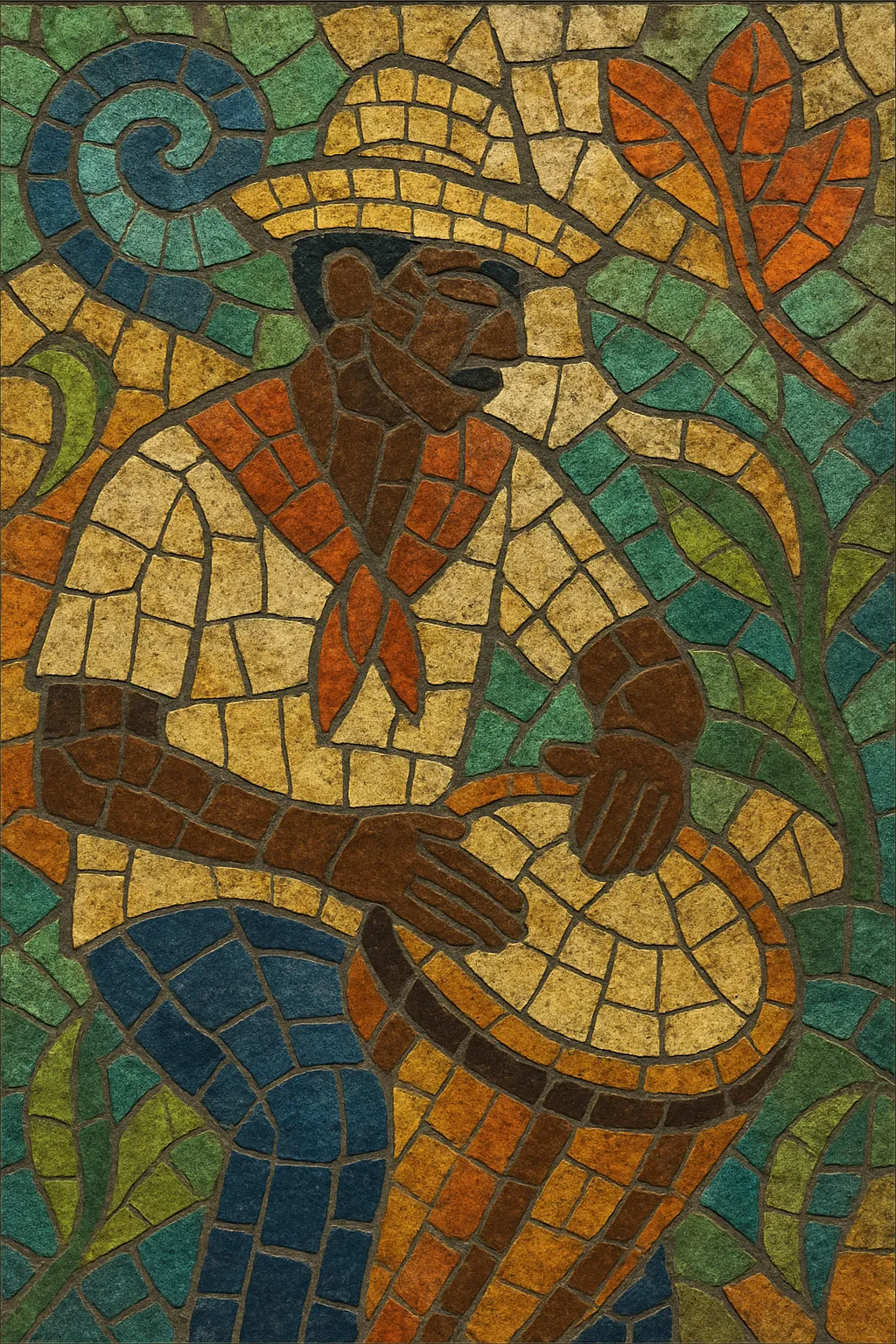Coco (also called côco or coco de roda) is a traditional Afro‑Indigenous circle music and dance from Northeastern Brazil, especially Pernambuco, Paraíba, Alagoas, and Rio Grande do Norte.
It is built on driving hand percussion, foot stomps that act as a rhythmic instrument, and call‑and‑response vocals led by a mestre (leader) and answered by a chorus. Melodies are concise and chant‑like, harmony is minimal or optional, and the groove emphasizes interlocking shaker and frame‑drum patterns.
As both a social dance and a community song form, coco features improvised or semi‑improvised verses that comment on daily life, love, humor, and regional identity. Its raw, earthy timbre and communal energy have made it a foundational rhythm for the Northeast and a lasting influence on modern Brazilian popular music.
Coco took shape along Brazil’s Northeastern coast in the 1800s among Afro‑descendant and Indigenous communities who labored in fishing, sugarcane, and coconut harvesting. Work songs and circle dances converged with Afro‑Brazilian drumming practices (batuque) and older lundu song‑dance traditions to produce a participatory form marked by percussive footwork (“batida do coco”) and responsorial singing led by a mestre.
In the early 20th century coco ensembles moved from neighborhood yards and terreiros to radio and records. Elements of coco also informed the quick‑tongued embolada style. By the 1950s, Jackson do Pandeiro’s virtuosic phrasing and pandeiro work brought Northeastern rhythms—including coco—nationwide attention, translating community grooves into popular repertoire while retaining their accent and swing.
A late‑century roots revival in Recife and Olinda, aligned with the mangue beat movement, spotlighted traditional forms. Artists such as Selma do Coco took street coco into festivals and studios, while community groups maintained the circle dance tradition. Municipal and federal heritage programs began documenting coco de roda as intangible cultural heritage, sustaining mestres, groups, and transmission practices.
Today coco thrives in cultural centers, neighborhood rodas, and hybrid stages. It interfaces with forró circuits, appears in contemporary songwriting, and supplies rhythmic DNA to experimental and pop artists. Despite modern amplification and staging, the genre’s core remains participatory: a circle, a lead voice, percussion, and the stomp that turns the floor into an instrument.


